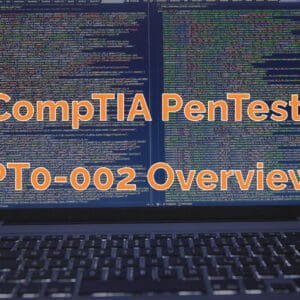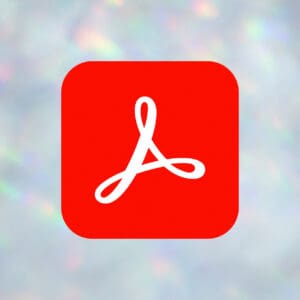Before you learn how to write an IT or Cybersecurity resume that gets attention, it would be good to learn the basics of resume writing.
One of my favorite resume videos you can find on YouTube is by personal finance and online business expert, Ramit Sethi. The video is called How to Write a Winning Resume, with Remit Sethi.
It’s a bit old by this point yet it covers things that can still be issues with resume writing that gets picked up by hiring managers.
Ok, great. How exactly does this help you write an IT or cybersecurity resume? More than you think. Besides the fact that Ramit used these tactics to get an offer at Google, there’s still some nuggets of wisdom you can pick up.
There will be subtle differences but you still have to get your resume past gatekeepers that don’t know a damn thing about tech or security.
Coming up, you’ll see the highlights of what Ramit teaches in the video in bold text and my commentary below each point describing how I’ve tested what he teaches.
Testing the Resume Lessons From the Video
Your resume should display a narrative. Make each word earn its way on to the page. Cut the fluff, cut the fat and leave only the filet mignon. Have 1, maybe 2 pages.
In his resume at the time, he listed descriptive words such as tech entrepreneur, persuasion, technology, and entrepreneurship. I tested this methodology by listing my efforts as a security program management and information security curriculum development. Going above and beyond job description activities seem to do well here.
Being crisp and direct seems to work very well, especially coming in at the 1 to 2 page mark. I tend to do this anyway. This doesn’t work as well for government contracting positions and federal jobs as they want super long, descriptive, and almost painstakingly fluffy resume packages.
Leave the filet mignon by use higher level and authoritative words that prove your competence.
In his resume, he specifically mentions developing curriculum. This type work development works very well here. When I talk about security initiatives in my resume, I also use words like curriculum and knowledge assessment instead of generic words like instruction and documents.
I have both a technical background as well as an administrative, desk jockey (?) background so clearly highlighting the points on both sides is crucial here.
Name top center, under name – top left address, top right, same height email, url, phone.
Does anyone actually forget to do this? I suppose the takeaway here is to make the information available without taking too much room.
Having website addresses or links to works is a great idea here. Don’t just talk about your work, show it! I always left this part out for some reason. Now I have my website link displayed proudly.
Education – month/year from – month/year to, tab, school name bolded. Degrees held and minors. Coursework included … Papers and research/projects available on my website.
I never knew exactly how to display my education so this was always kind of a passable section. This style actually gets the value of the education quickly with as much context as required.
Briefly going over coursework and listing available works is a great idea. Find a way to do this with at least one project you’re proud of. In the very least, have awards or honors that really compliment the type of work you’re looking for.
Work experience – Date, tab, name of company bolded, colon, and title italicized. Designed curriculum.
I like this style getting your experience across as well. It quickly goes over relevant information about your job and gives you a chance to use a few competence triggers.
I had always found a few highlights of my experience and just put a short summary of each line item. This is a mistake. Remember to cut the fat and really get your narrative across.
Additional information – bolded volunteer, scholarship, other awards and experience, colon, description, where to find it italicized. (further details on my website, Columns on URL)
This section should always be on your resume and you should never have it blank. There are plenty of opportunities to volunteer in the IT and cybersecurity fields, including STEM functions for kids as young as elementary school.
Being smart and skillful is not enough. You need to show you’re willing to solve problems and serve people. IT is now a service business and cybersecurity is a field that has a lot of problems to solve.
Competence triggers – the signals that show you are a top performer. Low + High social value, we can discuss salary after we determine we are a good fit for each other. Don’t just answer questions, also try to answer the question behind the question.
This is basically the term for positioning yourself with persuasion and psychological techniques that I mentioned earlier (higher level, authoritative language). This isn’t trickery, this is an indication you handle yourself well and can perform the job duties accordingly.
This is much tougher done than said. I’ve been practicing this type of stuff for years and I still don’t feel like I have it down yet. The good news is you don’t have to be perfect. You just have to be different enough and hungry to do the job for the hiring manager to get that gut feeling to hire you.
Don’t just list chronological events in your life. Convey a story.
Your resume is about a narrative. I too often made the mistake of creating my resume to be the list of a few professional things I did and it most likely always came across as I was just another pocket IT guy.
The narrative may change based on the company you apply to since your positioning may be different for each type of organization. For example, at the position I hold at the time of writing this post, having tech experience is very impressive. I had to explain a lot of the work I did in non-technical terms in the interview and it went really well.
But to another IT or cybersecurity organization, tech experience may not only be expected, but mandatory for success in the role. You still need to be able to explain how your projects benefited your last organization but more up front work in conveying these experience is required.
Resume words need to earn their way onto the page. The briefcase technique – preparation matters more than cost. When price comes up, pull out a 3-5 page proposal of things you found and how you would fix them. You’re making it easy to say yes.
Your resume needs to show that you put care and prep work into writing the thing. It doesn’t stop there though. Your resume is a glorified conversation starter. Yes, it’s very important but the words you use should be just the beginning.
Be prepared to talk about any point on your resume to truly be able to justify the words earned their way on the page. Identify ways you can help out and do your research before you get an interview.
Once you get an interview, check out some of the more common interview questions to see how you would answer them, before they are ever asked.
Master the game being played around you. Iteratively improve, figure it out, and don’t complain.
Your resume may get rejected or you may figure out you’re not as hot as you thought you were. No worries.
Learn from your mistakes and improve. Worst case scenario in gunning for a job is you figure out which position isn’t a good fit for you.
Don’t be afraid to test the meaty phrases you come up with. If they don’t land or they’re not as impressive as you thought they were, learn from it and move on.
This is huge.
Wrap Up
So what did you learn? Did you write an IT or cybersecurity resume yet? Do you have a game plan now?
When I realized I was coming across as just another common, boring person I was furious. I always work hard and did the “unrequired” work and still never got to where I wanted to be professionally. Over the last 4 years or so I’ve really switched this around.
The ability to write an IT or cybersecurity resume is crucial right now with the huge demand. You have to be able to stand out. If you’d like to see more material of experiments of this kind of stuff, let me know.







